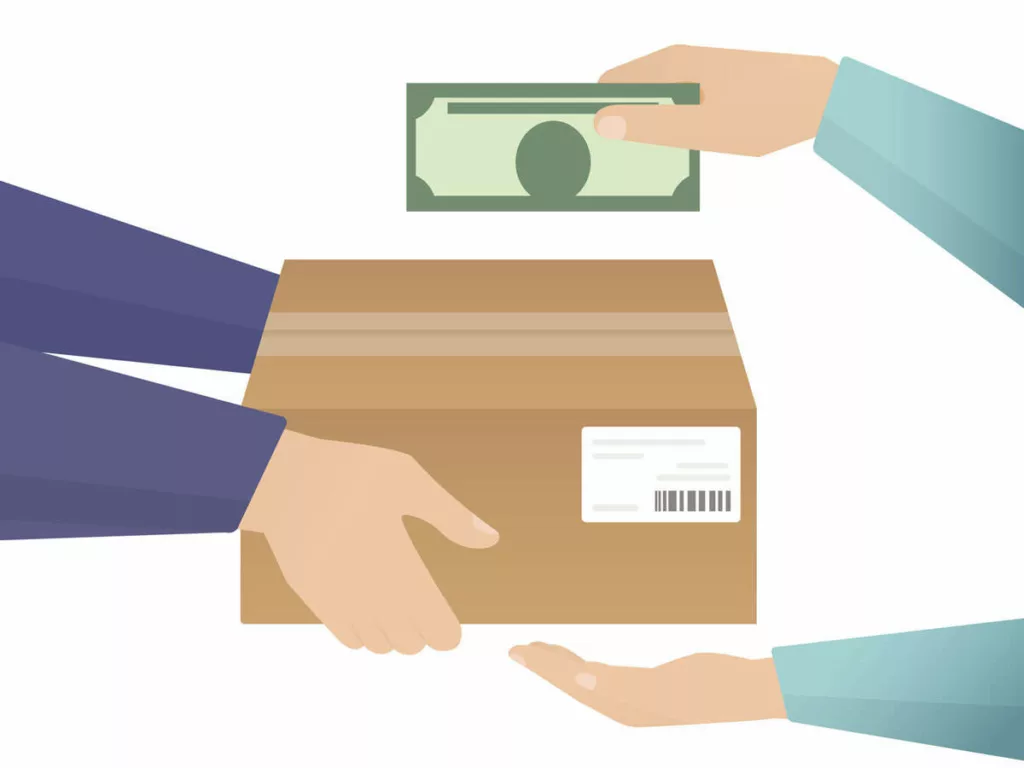Key Highlights:
- Cash on delivery (COD) allows customers to pay for purchases at the time of delivery.
- COD is a trusted payment option in e-commerce that caters to those who lack access to traditional banking services or prefer not to use digital payment methods.
- COD relies on trust and the tangible exchange of money, making it distinct from other online transactions.
- COD accommodates the preferences of a diverse customer base and enhances accessibility to online shopping.
- The process begins with the customer opting for COD during checkout. Upon delivery, payment is made in cash to the courier.
- COD bypasses the need for electronic payment means, making it an ideal option for those who cannot access or choose not to use such services.
The Basics of Cash on Delivery
Cash on delivery is a popular payment method that allows customers to pay for their purchases at the time of delivery. This comprehensive guide will explore the basics of cash on delivery, how it works, and the benefits and challenges of using this payment method. We will also provide tips for both buyers and sellers. Let’s dive in and learn more about cash on delivery.
Cash on delivery (COD) stands as a trusted payment option in the landscape of e-commerce transactions. This method facilitates direct exchange between buyers and sellers by allowing the payment for goods at the very moment they reach the customer’s doorstep. Particularly appealing to those who either lack access to traditional banking services or prefer not to use digital payment methods, COD caters to a wide audience by offering an alternative that relies on physical currency.
This mode of payment is distinguished by its reliance on trust and the tangible exchange of money, distinguishing it from the more common online transactions that require electronic funds transfer ahead of product delivery. It effectively bridges the gap for consumers who are cautious about sharing financial information online or are new to e-commerce. It provides a seamless transition from conventional shopping practices to the digital marketplace. By accommodating the preferences of a diverse customer base, cash on delivery enriches the e-commerce ecosystem. It enhances accessibility, ensuring that online shopping is an option for a broader segment of the population.
How Cash on Delivery Works

The cash-on-delivery process is initiated when a customer opts for this payment method during the online purchase checkout process. After placing the order, the item is shipped to the customer’s address without any upfront payment. Upon the arrival of the package, the delivery personnel request payment for the order total. The customer then pays the due amount in cash directly to the courier. It’s a crucial part of the process that the delivery person issues a receipt to the customer upon collecting the payment and verifying the completion of the transaction. This method bypasses the need for electronic payment means, thereby catering to those who either cannot access or choose not to use such services.
Importantly, this payment process hinges on the physical presence of both the customer and the delivery personnel at the time of the order’s arrival, ensuring that the transaction is settled promptly and securely. The process is designed to be user-friendly and does not necessitate the buyer to have any specialized knowledge beyond understanding the total cost of their purchase and having the cash ready to complete the payment upon delivery. This simplicity and directness of the cash-on-delivery system make it a preferred option for many, aligning well with traditional shopping experiences in the digital age.
Benefits of Using Cash on Delivery
The allure of cash on delivery (COD) as a payment method lies in its ability to instill consumer confidence. This method allows buyers to physically inspect the items they have ordered before parting with their money, ensuring that the products meet their expectations in terms of quality and accuracy. This tangible verification process mitigates the apprehension associated with online purchases, where the inability to see or touch the products beforehand can deter potential buyers. Furthermore, COD circumvents the potential hazards of online transactions, such as identity theft or credit card fraud, by eliminating the need to input sensitive financial information over the Internet.
This aspect is particularly beneficial for those cautious about digital payments or who prefer not to store their financial details on e-commerce platforms. In addition, the pay-on-receipt model ensures that customers are only charged for items that are successfully delivered, providing an additional layer of financial protection. For individuals without access to credit or debit cards, COD offers a convenient and inclusive alternative that broadens their shopping options. By offering this payment method, sellers can expand their customer base to include those who might otherwise be excluded from the e-commerce market due to a lack of traditional banking facilities or a reluctance to engage with online payment systems.
Challenges and Drawbacks of Cash on Delivery
Implementing cash on delivery (COD) comes with its own set of hurdles that both sellers and buyers need to navigate. For sellers, the logistical complexities involved in COD transactions can lead to increased operational costs. Managing cash payments requires secure handling and transportation, raising expenses related to delivery and processing. This can result in higher prices for consumers or slimmer margins for sellers. In instances where customers are not present to receive and pay for their orders, sellers are left with the burden of return shipping costs and lost revenue, exacerbating the risks associated with inventory management.
On the buyer’s side, the reliance on being physically present to accept and pay for deliveries can prove inconvenient, especially for those with unpredictable schedules. Unlike digital transactions that offer instant confirmation and tracking, COD can introduce delays and uncertainties in the delivery process. Additionally, the inability to leverage digital payment rewards or cashback offers, which are often tied to credit or debit card purchases, means that consumers might miss out on potential savings or benefits.
Moreover, the cash-intensive nature of COD can pose security risks for delivery personnel, who become vulnerable to theft. This not only impacts the safety of the individuals involved but can also lead to a reassessment of the viability of offering COD as a payment option, especially in regions with higher incidents of crime.

Tips for Buyers Using Cash on Delivery
When opting for cash on delivery as your payment method, ensuring a seamless and successful transaction is vital. Prioritize having the correct cash amount ready for delivery to avoid delays or complications at the time of the transaction. This preparation also includes setting aside small denominations to facilitate exact payment, as delivery personnel may not always have change available. Additionally, it’s critical to meticulously examine the items upon delivery to confirm they match your expectations and are free from damage or discrepancies.
This step is your opportunity to verify firsthand the product quality and specifications, which is a significant advantage of COD. Engage in clear and polite communication with the delivery staff if there are any issues or if further clarification is needed regarding the transaction. Holding onto the payment receipt is essential, as it serves as proof of the transaction and may be required in the event of a dispute or return request. By following these guidelines, you can enhance your cash-on-delivery experience, ensuring it is both convenient and secure.
Best Practices for Sellers Offering Cash on Delivery
For merchants considering or already offering cash on delivery as an option, it’s essential to institute a framework that minimizes risk and streamlines the transaction process. First and foremost, transparency with your customers is key. Ensure your COD policy is detailed on your website, including any additional fees, return policies, and what the process entails. This clarity helps set the right expectations and reduces the likelihood of refused deliveries.
Implementing a verification process can significantly reduce instances of fraud or non-payment. This might involve confirming orders through a phone call or an SMS confirmation before the item is dispatched. Such measures help ascertain the buyer’s intent to purchase and their availability to receive the order, which can save resources in the long run.
Record-keeping is another critical aspect. Maintaining detailed logs of COD transactions assists in tracking payments and can be invaluable in case of disputes. It’s also wise to partner with reliable logistics companies experienced in handling cash transactions to ensure that cash is collected efficiently and securely.
Training your delivery personnel on handling cash payments and potential customer disputes can also enhance the COD experience for both parties. They should be equipped with the necessary tools to facilitate smooth transactions, such as sufficient change and portable receipt printers.
Adopting these practices can help sellers mitigate some of the inherent challenges of cash on delivery, making it a more secure and efficient payment option.
The Future of Cash on Delivery
The landscape of payment methods in e-commerce is ever-changing, with innovations in digital payments and financial technology constantly emerging. Despite this, cash on delivery (COD) holds a unique position, particularly in markets where digital literacy or trust in online transactions remains low. As consumer behavior shifts and the accessibility of banking services improves globally, the reliance on COD may diminish.
Nevertheless, its significance in providing an alternative for those hesitant about electronic payments or without access to banking facilities cannot be understated. It’s conceivable that COD will continue to coexist with digital payment methods, adapting to new e-commerce trends and consumer demands. The adaptability of COD, coupled with the ongoing efforts to enhance security and convenience for both buyers and sellers, suggests a resilient future for this payment method in the e-commerce ecosystem.


